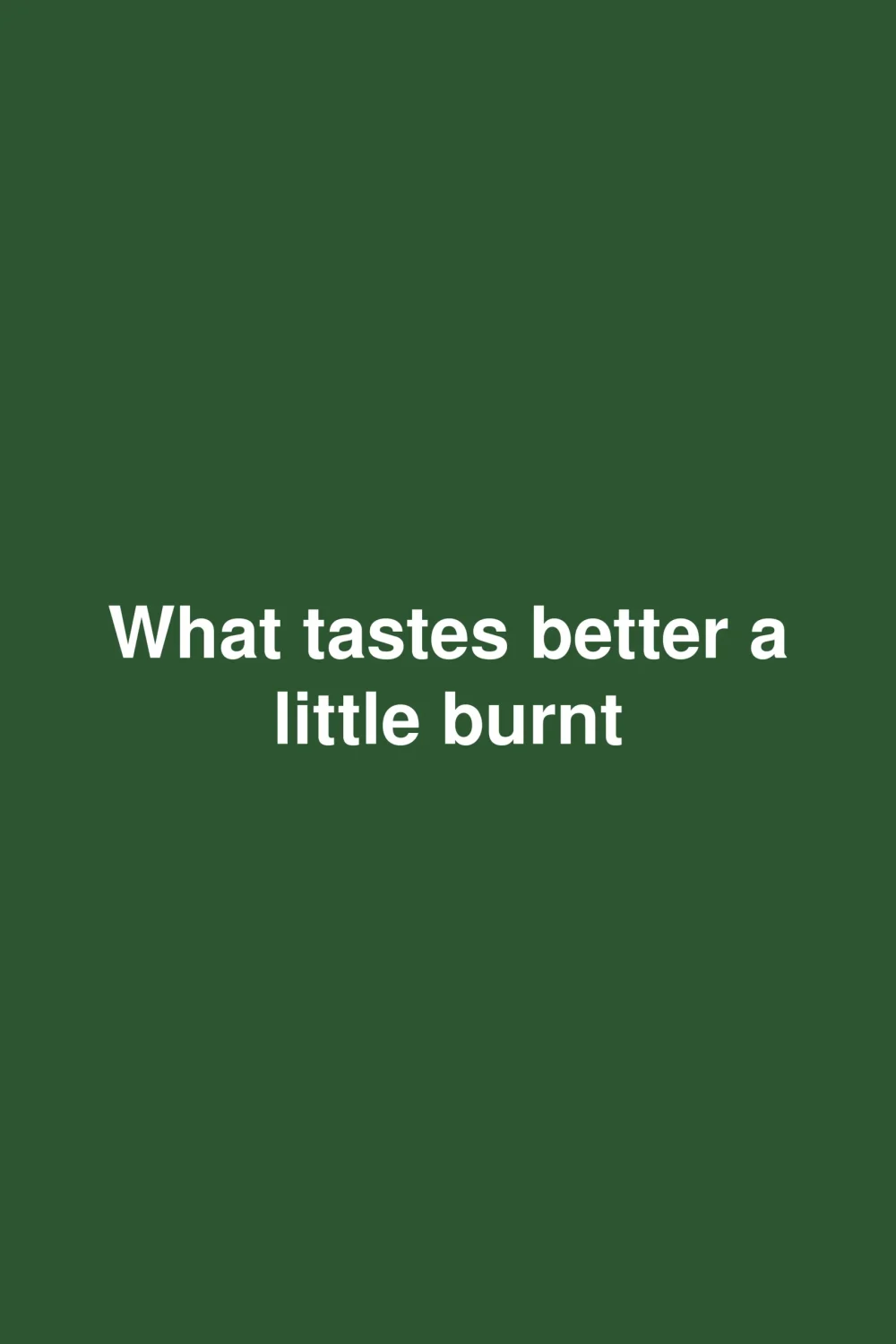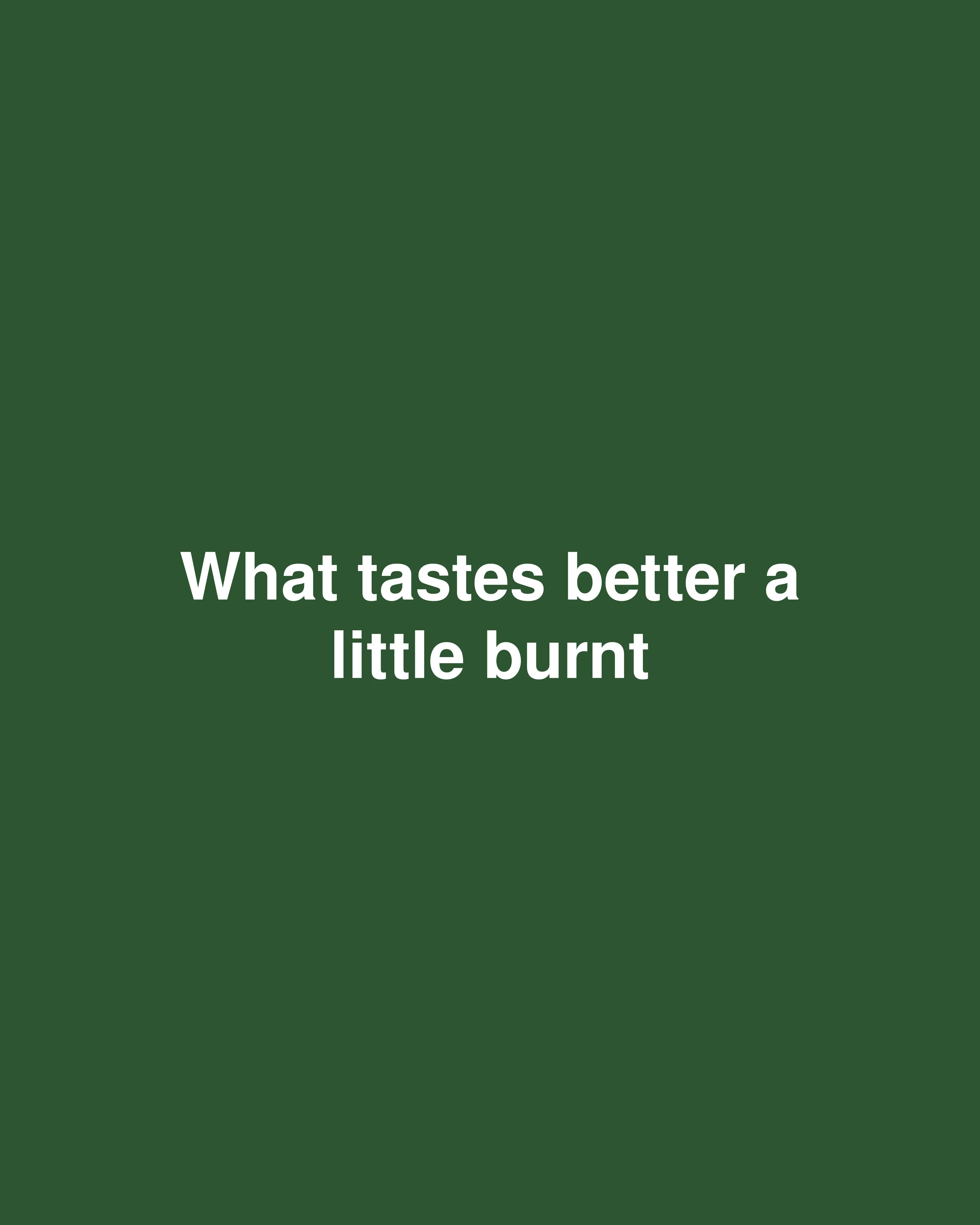Want to save this recipe?
Enter your email below and we’ll send the recipe straight to your inbox!
The Flavorful Art of Slight Burning: Foods That Taste Better with a Touch of Char
Have you ever bitten into a perfectly toasted marshmallow with that irresistible charred exterior, or savored the crispy edge of cheese that’s bubbled over on a pizza? That slight burnt flavor isn’t a mistake—it’s culinary magic. What many consider a cooking mishap often turns out to be the secret ingredient that elevates ordinary foods to extraordinary heights.
The Science Behind Why We Love Burnt Flavors
That distinctive taste when food gets slightly burnt isn’t just appealing by coincidence—there’s actual science behind our love for that charred flavor. Two chemical processes are primarily responsible: the Maillard reaction and caramelization.
The Maillard reaction occurs when amino acids and reducing sugars react under heat, creating hundreds of different flavor compounds. Meanwhile, caramelization happens when sugars break down under high temperatures, developing complex sweet and slightly bitter notes.
Together, these reactions create that perfect symphony of flavors—a delicate balance of bitterness, smokiness, and unexpected sweetness that plain cooking simply can’t achieve.
Foods That Shine With a Touch of Char
Marshmallows: Campfire Perfection
There’s something magical about a marshmallow toasted over an open flame until its exterior develops that beautiful dark crust. The contrast between the crispy, slightly bitter outer layer and the molten, sweet interior creates a multidimensional treat that plain marshmallows can’t match. This textural and flavor contrast is what makes s’mores such an enduring campfire tradition.
Caramelized Onions: Sweet, Savory, and Slightly Burnt
Onions undergo an incredible transformation when cooked low and slow until they develop deep brown edges. The natural sugars caramelize and concentrate, while those slightly burnt bits add complexity and depth. A touch of char gives caramelized onions an irresistible umami quality that elevates everything from burgers to French onion soup.
Grilled Meats: The Flavor-Packed Crust
The appeal of a perfectly grilled steak isn’t just about the juicy interior—it’s about that flavor-packed crust with its slightly burnt edges. The charred exterior creates a delicious contrast to the tender meat inside while adding smoky depth. Grill masters know that those blackened grill marks aren’t just for show; they’re concentrated flavor zones that transform the entire eating experience.
Pizza Cheese: The Crispy Edge Factor
When cheese bubbles over on a pizza and hits the hot surface of the oven, it creates those coveted crispy, slightly burnt edges. Pizza enthusiasts often fight over these caramelized bits because they offer an intensified cheese flavor and satisfying crunch that contrasts beautifully with the chewy crust and softer toppings.
Toast: Beyond Golden Brown
There’s toast, and then there’s perfectly dark toast—that sweet spot just before it turns black. This darker toast offers a richer, nuttier flavor profile that pairs wonderfully with both sweet and savory toppings. The slight bitterness of well-toasted bread creates a perfect backdrop for the creaminess of butter or avocado, adding complexity to even the simplest breakfast.
Roasted Vegetables: Caramelized Perfection
Roasting vegetables until they develop charred edges brings out their natural sweetness while adding smoky depth. Brussels sprouts, for example, transform from frequently rejected vegetables to crave-worthy sides when roasted until their outer leaves get crispy and slightly burnt. The caramelization process concentrates flavors while the slight char adds complexity.
Common Charring Mistakes to Avoid
Confusing “Burnt” with “Blackened”
There’s a crucial difference between pleasantly charred and unpleasantly burnt. Aim for spots of darkness rather than an entirely blackened surface. The goal is to enhance flavor, not overpower it with bitterness.
Using Too High Heat
Properly developing those delicious burnt flavors requires patience. Using extremely high heat often results in food that’s burnt on the outside but undercooked inside. Instead, use moderate-to-high heat and allow time for proper caramelization.
Neglecting Different Heat Zones
When grilling, create different heat zones so you can move food between direct and indirect heat. This gives you more control over the charring process and prevents accidental burning.
Health Benefits of Moderate Charring
Contrary to what some might believe, not all charring is unhealthy. In fact, the moderate charring of foods can offer some surprising benefits:
- The Maillard reaction creates antioxidant compounds in some cases
- Slightly charred vegetables often retain more nutrients than overboiled ones
- The enhanced flavors from charring can reduce the need for excess salt or fat
However, it’s important to note that heavily charred or blackened foods can contain potentially harmful compounds, so moderation is key.
Expert Opinions: The Chef’s Take on Controlled Burning
Professional chefs have long embraced the art of controlled burning. As renowned chef James Beard once noted, “The smell of good bread baking, like the sound of lightly flowing water, is indescribable in its evocation of innocence and delight.” This sentiment extends to the slightly burnt crust of artisanal bread, which many bakers intentionally develop for maximum flavor.
Chef José Andrés famously champions the socarrat—the crispy, slightly burnt rice at the bottom of paella—considering it the most prized part of the dish. This intentional charring concentrates flavors and adds textural contrast that elevates the entire eating experience.
Quick Recap: Mastering the Art of the Char
Embracing controlled burning in cooking isn’t about mistakes or carelessness—it’s about understanding how heat transforms food and creates new, complex flavors. From the crispy cheese on pizza to the caramelized crust on bread, these slightly burnt elements add dimension and character to our favorite foods.
The next time you’re cooking, consider pushing some elements just a bit further than you normally would. Allow those marshmallows to develop a deeper color, let those onions go a shade darker, or give your toast an extra minute in the toaster. You might discover a whole new dimension of flavor waiting just beyond “perfectly cooked.”
Frequently Asked Questions
Is charred food dangerous to eat?
Heavily charred or blackened food consumed regularly may contain compounds that aren’t ideal for health. However, food with moderate charring or caramelization is generally considered safe and can actually enhance flavor without significant health concerns.
What’s the best way to achieve controlled charring at home?
Start with a good-quality pan or grill that distributes heat evenly. Use moderate-to-high heat rather than maximum heat, and pay close attention during cooking. Creating different heat zones (especially when grilling) gives you more control over the charring process.
Which vegetables benefit most from slight charring?
Vegetables with natural sugars respond particularly well to charring. Brussels sprouts, bell peppers, corn, asparagus, and onions all develop wonderful complexity when their edges are allowed to caramelize and slightly burn.
Can you rescue food that’s too burnt?
If food is just slightly over-charred, sometimes scraping off the burnt parts can salvage it. For something like toast, a light scraping can remove excessive charring while maintaining that desirable toasted flavor underneath.


